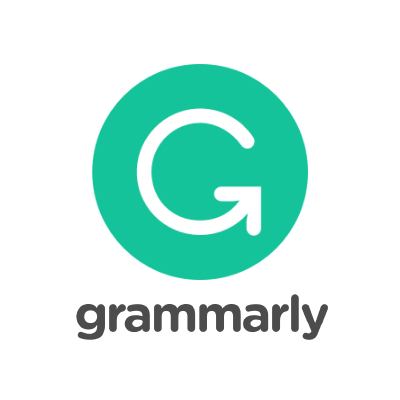Development of Science Learning Material Based on Scientific Literacy on Plants Tissues' Structure and Function Topic
Abstract
Scientific literacy is knowledge and skills in the scientific field in order to have the ability to identify problems, gain new insights, explain scientific phenomena, make conclusions according to reality, master the uniqueness of science, be aware of science and technology that shape the natural environment, and be willing to participate and care with problems related to science. The Science module is teaching material in science lessons that can make it easier to achieve learning objectives. Teaching materials used in the learning process have an important role in determining the success of learning. Teaching materials used in SMP/MTs tend not to involve students in exploring and applying concepts, causing them to be less active and creative in the learning process. Therefore, researchers through this research developed a scientific literacy-based teaching material related to the structure and function of plant tissue in natural science lessons. This study aims to explain the feasibility of scientific literacy-based teaching materials in the form of modules, their uses, and their practicality. This research is classified as development research. The development model used is the 4D model (Define, Design, Development, and Dissemination). The results showed that the validity of the module obtained a percentage of 90% with an average of 3.60 valid criteria without revision. Then the results of the module scientific literacy validity obtained a percentage of 80% with an average of 3.37 valid criteria. So it can be concluded that the modules used as science teaching materials based on scientific literacy on the structure and function of plant tissues are valid and suitable for use as teaching materials.
Keywords
Full Text:
PDFReferences
Akbar, S. (2013). Instrumen Perangkat Pembelajaran. Bandung: PT. Remaja Rosdakarya.
Angraini, G. (2014). Analisis Kemampuan Literasi Sains Siswa SMA Kelas X di Kota Solok. Prosiding Mathematics and Sciences Forum 2014, 169(1), 12-14.
Arikunto, S. (2013). Prosedur Penelitian suatu Pendekatan Praktik. Jakarta: Rineka Cipta.
Asyhar, S. (2012). Kreatif Mengembangkan Media Pembelajaran. Jambi: Referensi.
Chiapetta. (1991). A Method to Quantify Major Themes of Scientific Literacy in Science Textbooks. Journal of Research in Science Teaching, 28(8), 713-725.
Daryanto. (2013). Menyusun Modul: Bahan untuk Persiapan dalam Mengajar. Yogyakarta: Gava Media.
Fu`adah, F., dkk. (2017). Student’s Science Literacy in the Aspect of Content Science. Jurnal Pendidikan IPA Indonesia, 6(1). 81-87.
Hamdi, H. dkk. (2013). Pembuatan Multimedia Interaktif menggunakan Moodle pada Kompetensi Mengamati Gejala Alam dan Keteraturannya untuk Pembelajaran Siswa SMA Kelas XI Semester I. Piillar of Physics Education, 1(1), 55-62
Hosnan. (2014). Pendekatan Saintifik dan Kontekstual dalam Pembelajaran Abad-21. Bogor: Ghalia Indonesia.
Ibrahim, M. A. dan Aspar, N. H. M. (2011). Tahap Literasi Sains di Kalangan Pelajar Tingkat 4 Sekolah Aliran Agama di Daerah Hilir Perak. Journal of Science & Mathematics Educational, 2(2), 102-112.
Kemendikbud. (2017). https://www.kemdikbud.go.id/blog/2017/02/sekolah-inklusi-dan-pembangunan- slb-dukung-pendidikan-inklusi Diakses pada 26 April 2017.
Mudlofir, A. (2012). Pendidikan Profesional. Jakarta: Raja Grafindo Persada.
Novitasari, dkk. (2016). Pengembangan Modul Pembelajaran IPA Terpadu berbasis Literasi Sains pada Biologi sebagai Sumber Indra Mata di Kelas VIII SMP/MTs. Jurnal Sains. 1(5), 110-112.
Novitasari, dkk. (2016). Pengembangan Modul Pembelajaran IPA Terpadu berbasis Inkuiri Terbimbing Tema Matahari sebagai Sumber Energi Alternatif di Kelas VII SMP/MTs. Jurnal Inkuiri 5(1), 112-121.
Prastowo, Andi. (2014). Metode Penelitian Kualitatif dalam Perspektif Rancangan Penelitian. Jakarta: Ar-Ruzz Media.
Sugiyono. (2012). Metode Penelitian Kuantitatif dan R&D. Bandung: Alfabeta.
Sugiyono. (2015). Metode Penelitian dan Pengembangan. Bandung: Alfabeta.
Suprawoto, N. A. (2009). http://id.scribd.com/doc/165545502/Mengembangkan-Bahan-Ajar-dengan-Menyusun-Modul diakses pada 2 Januari 2019.
Widoyoko, E. (2016). Penilaian Hasil Pembelajaran di Sekolah. Yogyakarta: Pustaka Belajar.
DOI: https://doi.org/10.20527/i.v3i1.8607
Refbacks
- There are currently no refbacks.



.png)

